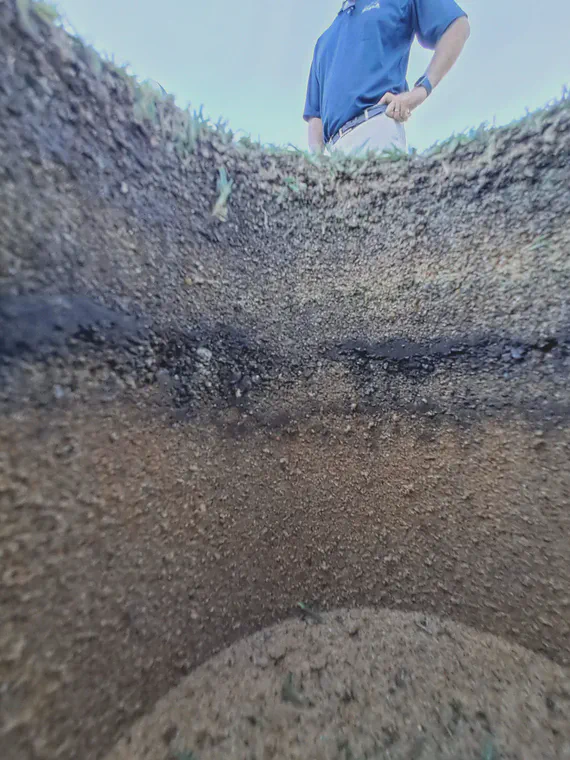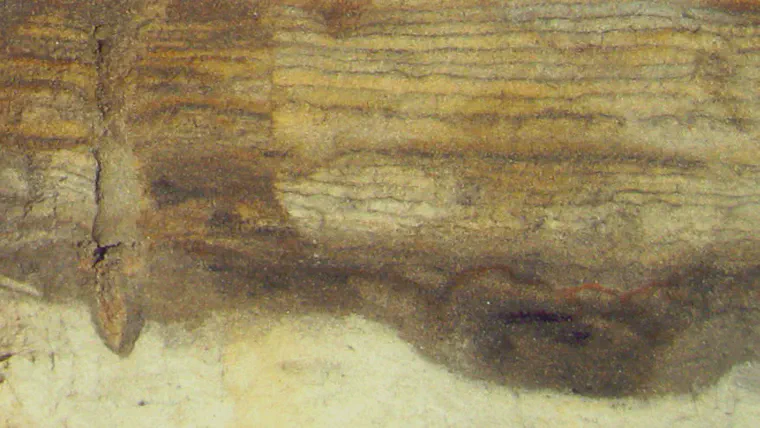Layers in the rootzone

Layers in the rootzone are supposed to be bad. The images above and below look awful, don’t they? A layer like that could inhibit rooting, stop water flow, and all kinds of things. But the turf, surprisingly, is just fine.

In fact, there are roots growing right through the soil layer. The short videos listed below show just how vigorously the roots blasted through the layer in the rootzone.
I have some pragmatic advice about this. Avoid layers if you can. If layers are causing a problem, deal with them. But be aware that layers in the soil under turfgrass don’t always cause a problem. If the turf is growing fine, and it often is, then you can be aware of the layers but you don’t need to panic about their presence.

I’m reminded of this soil profile I saw from a more than 70 year old putting green planted on top of natural dune sand in the Sydney (Australia) area some years ago. The dune sand is visible at the bottom of the profile, then there are layers showing annual renovations, just like tree rings. And then a lack of, and more holes, and changes in topdressing sand, perhaps, and so on. A regular turfgrass archaeological dig. But despite all those layers, these greens produced some fine surfaces for almost a century.
Here’s a zoomed-in look at the annual renovation layers from the bottom right of the full image above.

This type of layering reminds me of a Baumkuchen. I’ve also seen this type of layering on high performing greens that don’t receive much, if any, in-season sand topdressing.
Now should we be more concerned about the layering, or about the fact that the greens are performing at a high level? My advice is to be intimately familiar with any layers in the rootzone, and then taking action only as necessary.